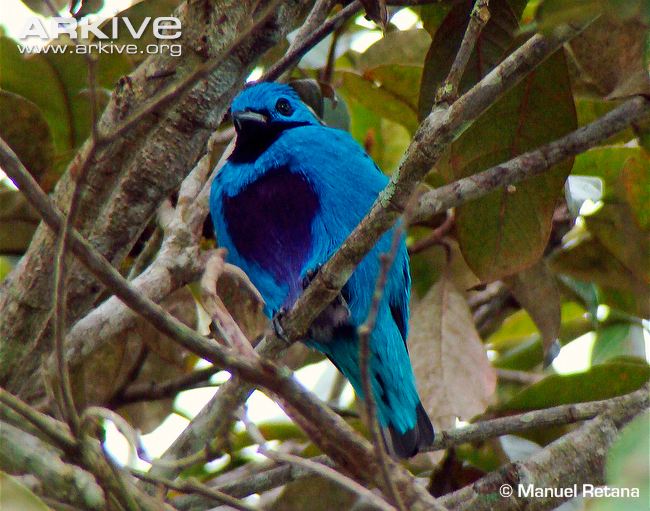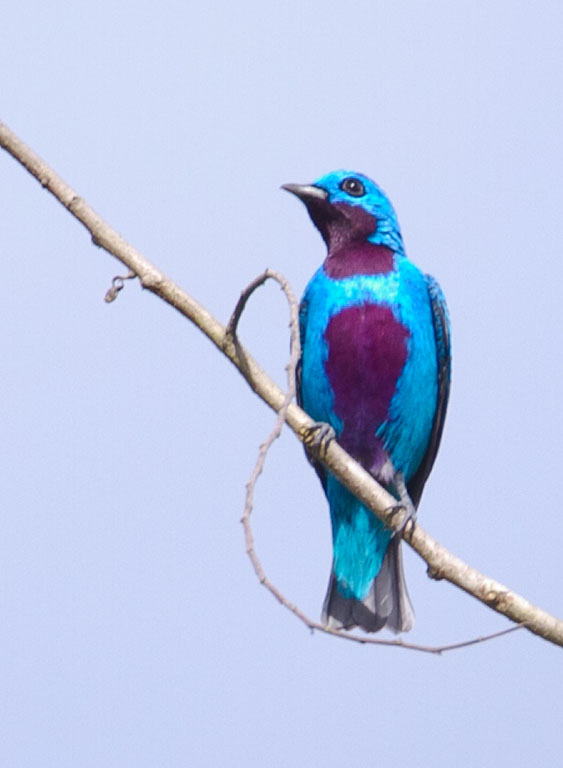
Cotinga ridgwayi
TAXONOMY
Cotinga ridgwayi Ridgway, 1887.
OTHER COMMON NAMES
English: Ridgway’s cotinga; French: Cotinga turquoise; German:
Ridgway-Kotinga; Spanish: Continga de Ridgway.
PHYSICAL CHARACTERISTICS
Weight for this genus is around 2.5–2.8 oz (70–80 g). This
species is starling-sized. Males are predominantly ultramarineblue
in color, with black on the wings and tail, and separate
patches of violet on the throat and breast. Their subcutaneous
and perivisceral fat often takes on the blue color of the berries
they prefer.
DISTRIBUTION
This species is restricted to southwest Costa Rica, barely ranging
into western Panama.
HABITAT
This species, like other members of this genus, can be found in
canopies of lowland tropical evergreen forest. Additionally, it
may be found in secondary forest. It may range up to 5,550 ft
(1,850 m).
BEHAVIOR
The quiet
BEHAVIOR
of the members of this genus is in contrast
with their vivid colors.
FEEDING ECOLOGY AND DIET
Fruit and berries are consumed, often “gorging” at a masting
tree or bush such as mistletoe. The fruits are often plucked on
the wing. Although the seeds of larger species (e.g., mistletoe)
might be regurgitated, smaller seeds are often swallowed. Insects
are also taken.
REPRODUCTIVE BIOLOGY
The mating system is not completely known within this group,
although for the most part it appears that males display solitarily.
The nest is platform type, often high in a tree fork, or next
to an epiphyte. The female incubates and cares for the young
alone.
CONSERVATION STATUS
Vulnerable, with habitat alteration due to agrarian encroachment
being the principal threat. Its geographic range is estimated
at 3,200 mi2 (8,400 km2). Its numbers are estimated at
less than 10,000, with populations declining.
SIGNIFICANCE TO HUMANS
Several indigenous tribes use cotinga feathers in their ornamentation.
One of the most frequently seen groups is Cotinga,
which is commonly represented in costumes of certain Amazonian
tribes. Perhaps as many as 10–15% of artifacts have
Cotinga feathers, although the most commonly used feathers
are those of Psittacids (Ara and Amazona).
Other popular Animals
Photo Gallery of - Turquoise cotinga




 Animalia Life
Animalia Life